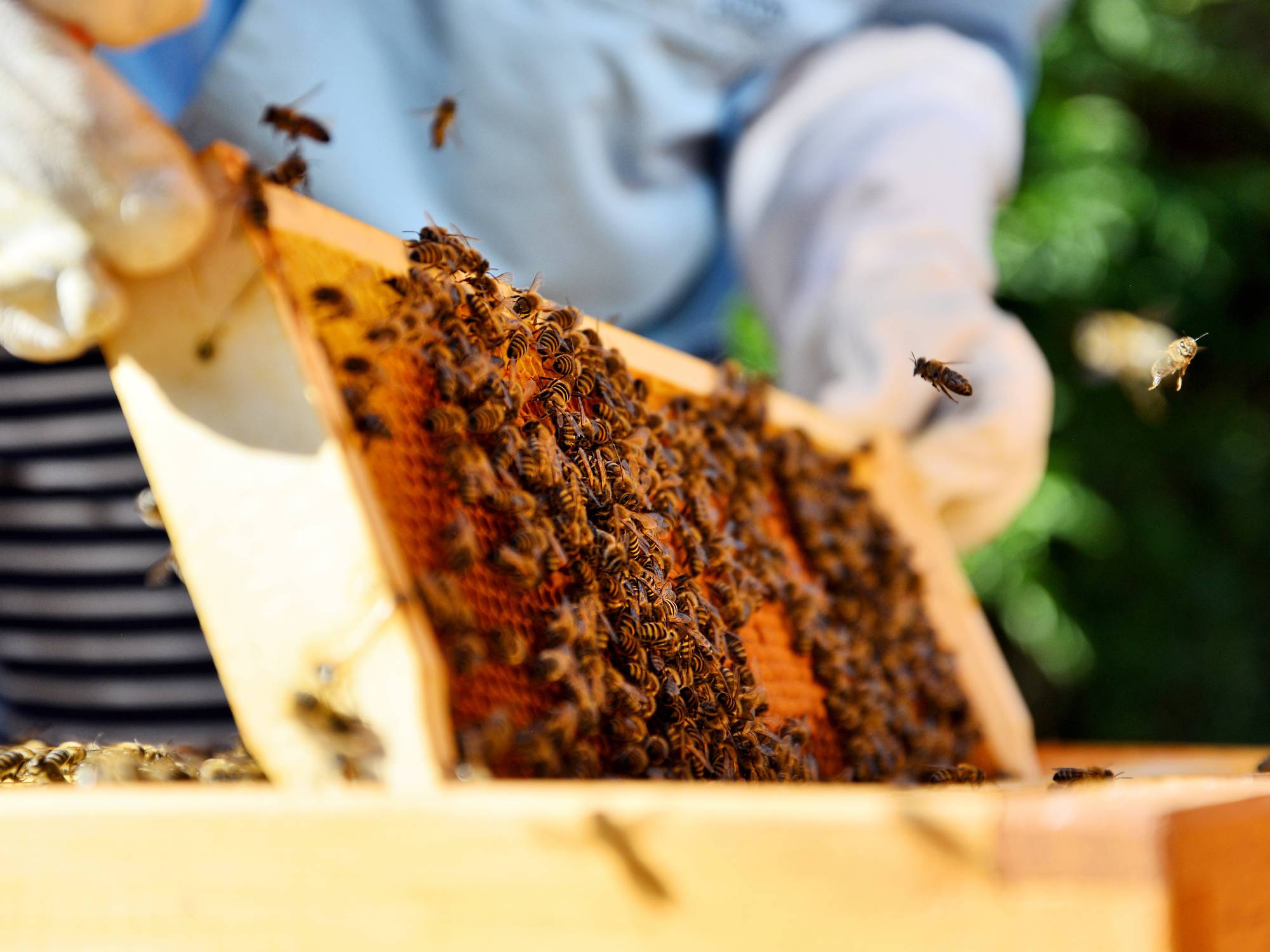In the heart of Texas, honeybees reap the agricultural bounty where wildflowers bloom and the sun shines bright. Beekeepers must understand the health of these buzzing wonders. Explore some vital things to know about honeybee health to keep your hive flourishing.
Why Honeybee Health Matters
Honeybees do more than produce honey; they serve as indispensable pollinators for ecosystems and agricultural success. Honeybee colony health directly impacts crop yields and plant life diversity.
In Texas, where agriculture drives the economy, bees play a key role. Healthy bee populations ensure the flourishing of crops, gardens, and wildflowers while supporting the wider environment and biodiversity.
Recognizing Healthy Bees
What’s the first sign of vitality in a hive? Activity. Healthy bees stay busy from dawn till dusk, with workers constantly flying in and out of the hive.
Inside the hive, neat rows of honeycomb filled with honey and brood confirm that the queen is laying eggs, and that the colony is growing. A lively hive indicates bees are making the most of the sunny days.
Common Threats to Honeybee Health
Honeybees, unfortunately, face numerous threats. Pests like varroa mites infiltrate hives, wreaking havoc by weakening bees and spreading disease.
Additionally, pesticides used in agriculture harm bees, affecting their nervous systems and reducing colony numbers. Understanding these threats and implementing protective measures helps maintain healthy bee colonies.
Managing Bee Health With Natural Remedies
Those who rely on natural remedies for use in beekeeping prize essential oils like thyme and mint to manage mite infestations effectively.
Regularly checking hives and maintaining cleanliness prevents the spread of disease, ensuring happy and healthy bees. In true Texan spirit, keeping things simple and natural often yields the best results.
Growing Your Honeybee Population Safely
Understand how to increase your honeybee population safely by providing a supportive environment and adequate resources. Providing access to diverse floral resources encourages bees to thrive, and planting native Texan wildflowers like bluebonnets offers bees the nutrients they need while beautifying your surroundings.
Gradually expanding a hive by adding frames as the population grows prevents overcrowding and stress.
Nutritional Needs of Honeybees
Honeybees have specific nutritional needs, just like all living creatures—they need a diet rich in carbohydrates from nectar and proteins from pollen.
Supplementing their diet with sugar syrup during lean periods provides your bees with a necessary energy boost. For Texas beekeepers, where droughts limit natural nectar supplies, proactively feeding bees keeps them strong and productive.
Seasonal Beekeeping Tips for Texans
Texas’s diverse climate requires beekeepers to adapt their practices throughout the year. In spring, focus on hive expansion and swarm prevention. During our hot summers, make sure your bees have sufficient water and shade to prevent heat stress. Prepare for winter by reducing hive entrances and providing windbreaks to protect colonies when temperatures drop.
Whether tending a single hive or managing a large apiary, understanding these vital things to know about honeybee health can pave the way for your hive’s long-term success. By implementing these tips and closely monitoring your bees, you can guarantee your colonies thrive.
Texas Outdoors
Latest posts by Texas Outdoors (see all)
- Benefits of Two-Way Radios for Hiking and Camping – June 23, 2025
- What To Consider When Staying at Your First RV Campground – June 18, 2025
- A Quick Guide for the Different Off-Road Trail Ratings – June 11, 2025

Leave a Reply